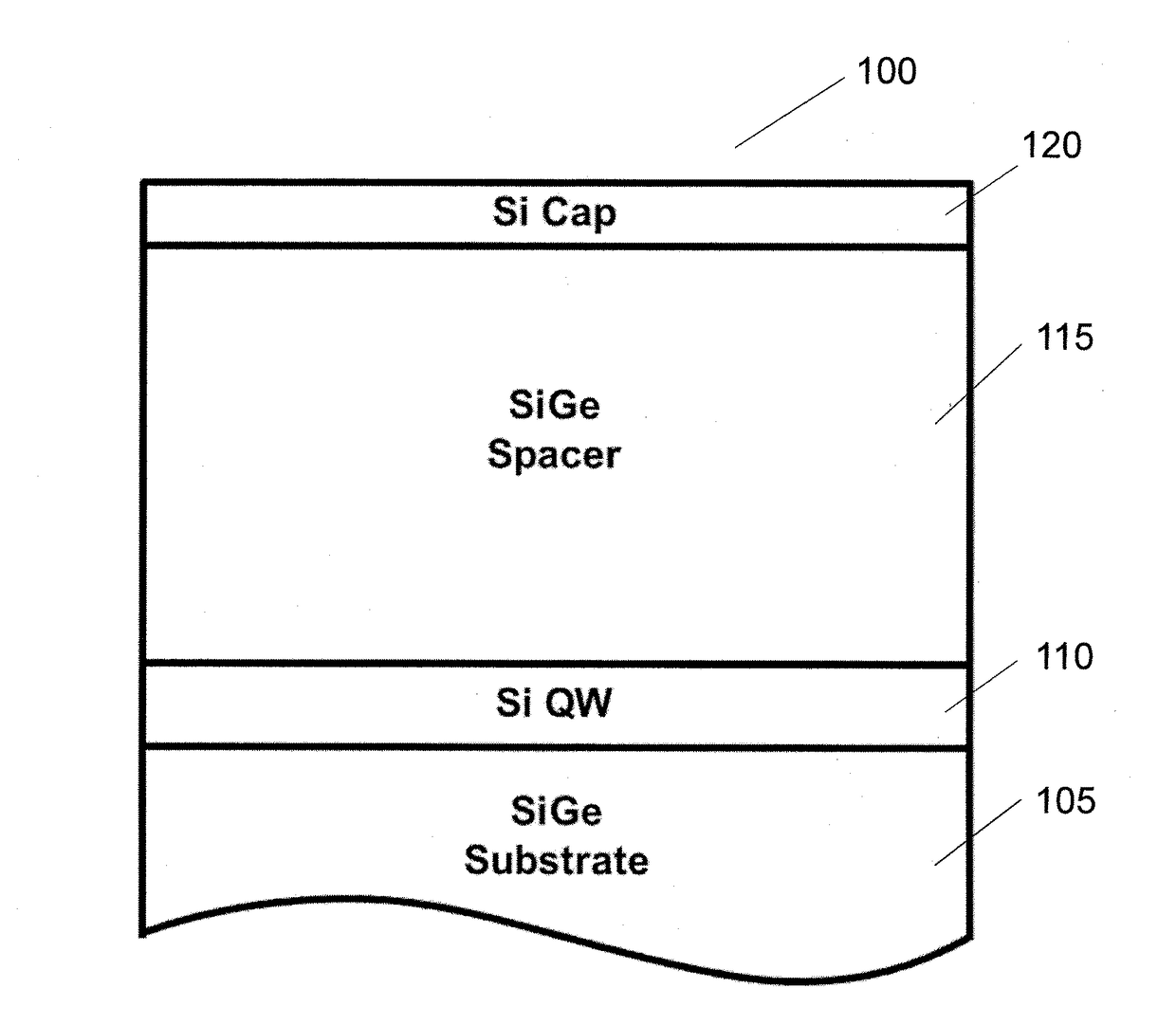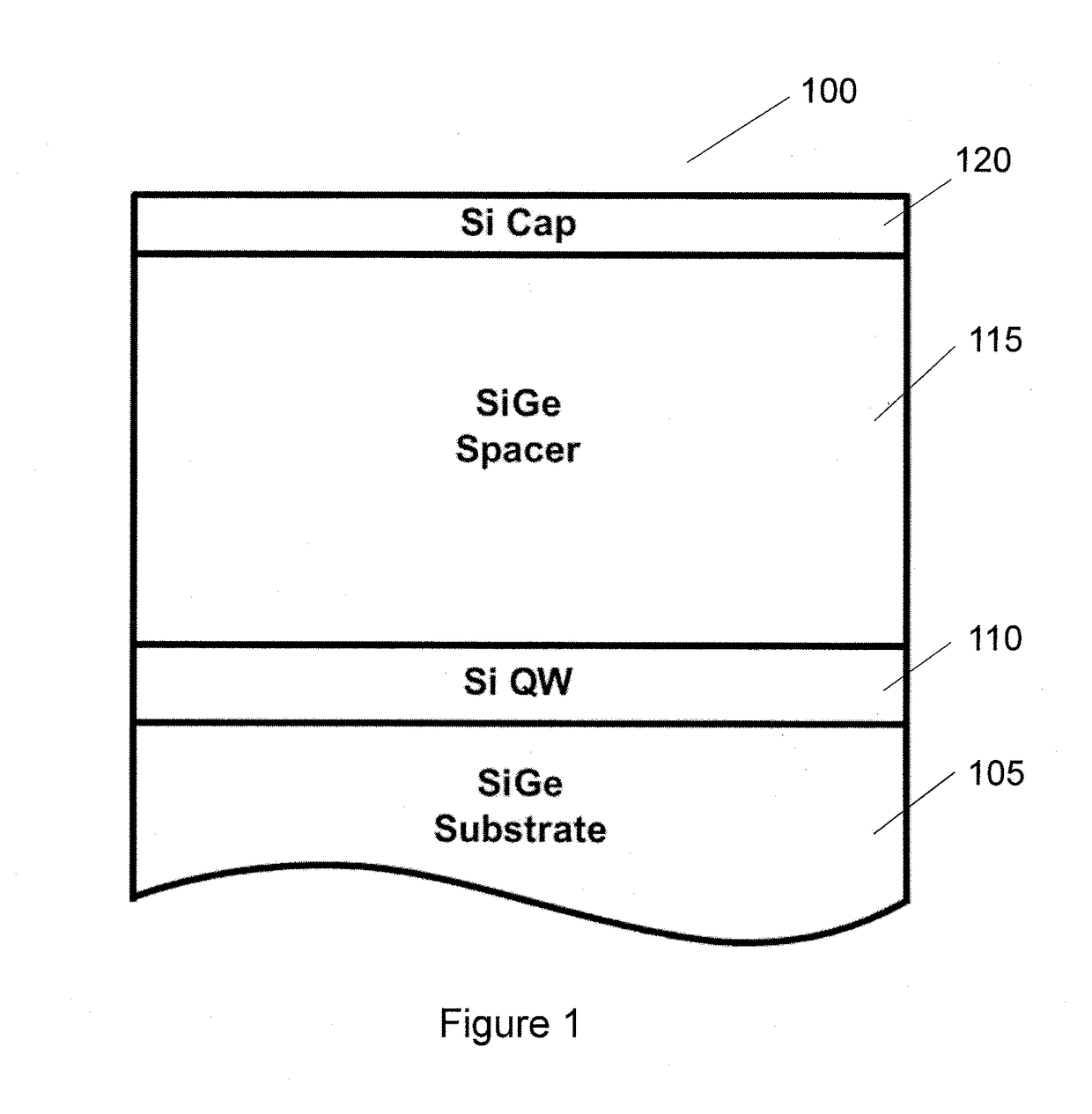Semiconductor quantum dot device and method for forming a scalable linear array of quantum dots
a quantum dot and semiconductor technology, applied in the field of quantum computing architectures, can solve the problems of difficult fabrication of reliable and scalable si-based quantum dots, difficult reproducible properties of quantum dots, and difficult for this trend to continue much longer
- Summary
- Abstract
- Description
- Claims
- Application Information
AI Technical Summary
Benefits of technology
Problems solved by technology
Method used
Image
Examples
Embodiment Construction
[0011]To that end, in order to overcome at least some of the deficiencies described herein above, an exemplary quantum dot device can be provided, which can include, for example, at least three conductive layers and at least two insulating layers electrically which insulate the conductive layers from one another. One of the conductive layers can be composed of a different material than the other two of the conductive layers. The conductive layers can include or be composed of (i) aluminum, (ii) gold, (iii) copper and / or (iv) polysilicon. As an alternative, the conductive layers can be composed at least partially of (i) aluminum, (ii) gold, (iii) copper and / or (iv) polysilicon. The insulating layers can be composed of (i) silicon oxide, (ii) silicon nitride or (iii) aluminum oxide.
[0012]In some exemplary embodiments of the present disclosure, the conductive layers can be composed of a metallic material having a purity rate of over 90% (e.g., 99.9%). Each of the conductive layers can ...
PUM
 Login to View More
Login to View More Abstract
Description
Claims
Application Information
 Login to View More
Login to View More - R&D
- Intellectual Property
- Life Sciences
- Materials
- Tech Scout
- Unparalleled Data Quality
- Higher Quality Content
- 60% Fewer Hallucinations
Browse by: Latest US Patents, China's latest patents, Technical Efficacy Thesaurus, Application Domain, Technology Topic, Popular Technical Reports.
© 2025 PatSnap. All rights reserved.Legal|Privacy policy|Modern Slavery Act Transparency Statement|Sitemap|About US| Contact US: help@patsnap.com



